Disclosure: Privacy Australia is community-supported. We may earn a commission when you buy a VPN through one of our links. Learn more.
Best Coding Courses & Certifications Online (in 2024)
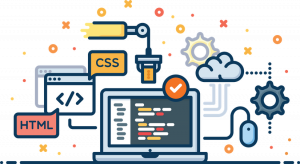
These days, coding and programming skills are must-haves for those seeking a career in technology. This makes sense, as our world is so connected and each device we use daily requires programming to function right and to expand capabilities.
That demand has pushed millions of students across the globe to register with programming courses, and for some, to even do a degree in computer science. It’s a strong pathway to a career in tech but isn’t the right fit for all. Explore the top coding courses & certifications online.
📛Certificates earned:
- #1 Udemy: R Programming Course A-Z™: With Real Exercises
- #2 Udemy: Data Science and ML Bootcamp with R
- #3 Johns Hopkins University: R Programming Certification (via Coursera)
- #4 Udacity: Programming for Data Science with R Nanodegree Program
- #5 Harvard University: Data Science: R Basics Certificate (via edX)
Skills learned include:
- ⭐ Software Engineers
- ⭐ Product Engineers
- Architecture
- ⭐ Hacking & Exploiting
- ⭐Scripting
- Infrastructure / Networking / Servers / Serverless, etc.
- ⭐ Full Stack Engineering or Backend / Frontend
- “Mobile” Engineering
- ⭐ Game Engineers
#1 Udemy: R Programming Course A-Z™: With Real Exercises
This popular coding course focuses on mastering programming languages in R and R studio featuring real examples. You’ll learn what a data analyst does, including associated and subset skill sets such as statistics, data science, packages, and GGPlot2.

Nearly 100,000 students have graduated from this Udemy R program. The programme doesn’t assume students have experience or know-how in the subject. It is structured in such a way that you can get yourself to pace even if you do not have a background in statistics. Sessions gradually advance up R’s learning curve. Students are assigned focused datasets aimed at practising what they learn throughout.
So overall, the curriculum starts off with the R coding fundamentals as well as how to integrate the concepts of statistics and programming. The curriculum then expands into more advanced areas such as data frames and matrices.
To support your understanding, educational materials include a lot of hands-on opportunities to test out the theory through real-world examples – thus the name of the course. Every single session teaches a valuable skill in the context of how it can be used to solve problems you are likely to face in employment.
⭐ Key features:
- Develop visuals designed to optimally frame your analytics and engage your target.
- Constantly contextualises skills by solving practical analytical problem sets.
- Teaches you how to tailor your R studio according to your workflow.
- Learn developing and applying matrices and vectors in R.
- Learn the insulation process for R packages.
- Real-world exercises include the finance, statistics, and sports industries.
- Explore how Normal distribution and Large Numbers work.
- Students are given coursework to get further practice.
Duration: 10 hours (video lectures, to work through at your own pace)
You can Register Here
#2 Udemy: Data Science and ML Bootcamp with R
Rather than focusing on the R programming language exclusively, this Udemy course delves into both how to do R coding, using it for data analytics, creating compelling data visuals – but also how to integrate R programming for use in programming machines. Which makes this a top machine learning course too.

This 2-in-1 program comes prepared by one of the top instructors on the online learning platform, Jose Portilla. Jose has already run Data Science and Programming courses for thousands of enrollers. The course goes through the building blocks of the language up to seasoned data analyst professionals seeking a career shift into data science and/or machine learning. The principles of both machine learning and data science are covered from the foundational level to advanced aspects.
It’s overall a thorough R course with more than a hundred high-definition video lectures, comprehensive programming notebooks with each session, a good number of posts, and downloadable materials. Students begin with configuring their environment and then start handling the building blocks of coding in R which includes data frames, vectors, and matrices. As for data visualisations, this component is tied into a capstone data project. Finally, machine learning is explored through 12 portfolio creating products – once validated, students are given a certificate of completion.
⭐ Key features:
- Develop compelling Data Visualisations
- Learn how to use R to investigate data efficiently.
- Learn R use cases for dealing with web scrapes, Excel, CSVs, and SQL.
- Explore the machine learning algorithms – topics range from logistic and linear regression to advanced concepts like support vectors, decision trees, and random forests. As well as trending applications like data mining in Twitter and word clouds.
- The sessions are accompanied by hands-on R coding exercises and capstone projects aimed at building an ML portfolio.
- Membership to an exclusive Q&A forum.
Duration: 18 hours of video lectures, learn at your own pace.
You can Register Here
#3 Johns Hopkins University: R Programming Certification (via Coursera)
This Data Science program is prepared by Johns Hopkins University. The course focuses on learning how to use R for coding and to carry out practical data analytics.

As with our first entry in this guide, the course explores the practical applications of the R programming language – the curriculum also includes R code, how to access R packages, doing data reading into R, creating R writing functions, doing debugging, and managing and making comments for R code.
Before you can gain your John Hopkins Certificate in R coding, you need to advance through the fundamental components of R like data types, and functions needed for writing and reading data and so on. The course then builds onto using control models to create R programs and common data operations. Profiling and debugging are also key focus.
Later, the course explores ways of doing data simulations in R, which is the foundational skill needed for research-focused simulations. The instructor for this John Hopkins programming course is Roger D. Peng, who has a PhD and is also a lecturer for Biostatistics. Other professors include Jeff Leek and Brian Caffo, you have the same academic and professional background as Roger.
⭐ Key features:
- Students learn about the setup and installation process needed for a statistical coding setting.
- Learn about the background of R and S.
- Study detailed data collection via an R profiler.
- Work through crucial coding language concepts and how they intertwine in R.
- Learn about R loops and debugging.
- Learn from a highly accredited academy and professors.
Duration: Roughly 24 hours
You can Register Here
#4 Udacity: Programming for Data Science with R Nanodegree Program
If Udacity’s Nanodegree programme is new to you, here is an overview. Udacity itself is an educational platform that offers MOOCs.
A number of these are free computer science courses, which are facilitated through Stanford University.
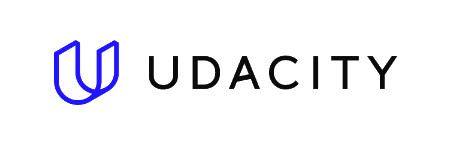
The Nanodegree courses in comparison to Chrome from collaborations with technological leaders such as Meta, Google, Salesforce, GitHub, and AT&T – and subjects range from web design to entrepreneurship and machine learning. These courses are a challenge but there may benefit is their razor-sharp focus on in-demand skills, specifically technology-related.
Courses balance self-learning and instruction. They give you the tools needed to practice concepts for yourself, and the on-demand format means you have time to apply and consider your thinking. You need to complete a key task during the evaluation process in order to earn your certificate. Because of the partnerships with technology companies, graduates are offered a direct route into work with technology-based companies.
The specific course itself goes through key skill sets needed for a career in data science, focusing on command lines, git, SQL and R programming (introductions to these). Which makes this a suitable room for entry-level pathways into data science as a career. Learn about the history of R programming in the context of ways used – this includes installation, configuration for environments, storing and handling data as well as data visualisation representations and more – from debugging, to writing scripts, and customising functions.
⭐ Key features:
- Covers the most essential programming languages needed for data science work, SQL and R.
- Introduction to creating compelling visualisations via the ggplot2 library.
- Covers common datasets for trialling what you have learned in a practical way.
- Exercises are focused on industry-relevant use cases.
- Students are evaluated individually – leveraging 900 project reviewers.
- Student portal where members can connect with each other.
- Mentors give individual mentorship and career advice.
- Beginner-friendly.
Duration: Learn at your own pace, according to capacity and pre-existing awareness.
You can Register Here
#5 Harvard University: Data Science: R Basics Certificate (via edX)
This is actually the first programme in a nine-part series for Data Science in which students earn a professional certificate program prepared by HarvardX hosted on the edX platform. The objective of this edX R course is to give an overview of R coding.
No pre-qualifications are needed to enrol on this course – which makes this a useful program for anybody looking to begin in Data Science.
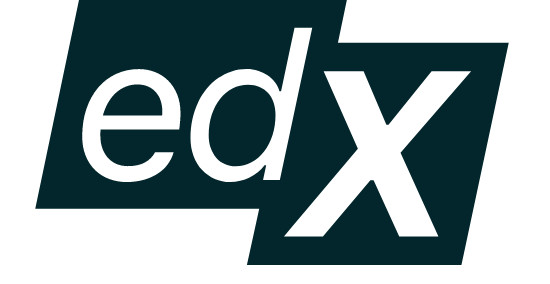
As well as for programmers able to code in other programming languages, who want to broaden out to R programming.
In terms of real-world exercises, focuses on using R programming in order to tackle challenges in Crime in the United States. The tutor for this course is Rafael Irizarry who tries to break down complicated subjects in a straightforward way and in plain terms. A couple of programming exercises accompany this program, which itself is open to users free of charge – but you need to pay in order to take the graded tests and achieve a certificate of completion.
⭐ Key features:
- Set yourself a firm foundation in data science for future growth in advanced aspects.
- Learn to perform key functions in R and a range of important handling.
- Accompany skills with real problem sets.
Duration: Learn at your own pace.
You can Register Here
Software Engineering Explained 💽
Software engineering applies many principles and formal processes found in traditional engineering to the development of software and applications. Software engineers start with functions the user will need. They plan the application, launch, quality test and maintain it. Software designers also give directions to computer coders on how to program applications. The engineer may or may not be involved in the programming themselves, however, they need to have strong coding abilities in order to manage the programmers and typically have fluency in several coding languages.
Software engineers hand over the planning and development of business apps, computer games, network management systems, and operating systems. They have an expert understanding of the theory and concepts of computer software and the limits of hardware it is being incorporated into.
What is a Product Engineer?
Meanwhile, product engineers are experts in mechanical engineering and so I know the designing of products as well as the operational logistics of manufacturing these products. Product engineers can be found in almost any industry that involves manufacturing. They normally will be on-site in the manufacturing plant, to monitor the building of a product. But they are also sometimes found in corporate settings.
Product engineers for every stage of a product’s development. Here are a few key responsibilities and tasks that product engineers handle day-to-day:
- Applying industry practices and trends to generate winning product ideas.
- Collaborating with the product dev team in order to make product ideas concrete.
- Working with CAD applications to design products.
- Evaluating and testing prototypes to tweak the design – searching for vulnerabilities and possible safety hazards.
- Consorting with logistical and shipping handlers to figure out the most cost-effective manufacturing pathway and materials.
- Monitoring the manufacturing process to maintain safety and efficiency.
What is Ethical Hacking?
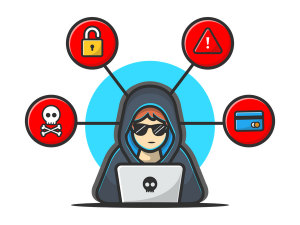
Ethical hacking is also called pen (penetration) testing or white-hat hacking. It’s a fast-paced and exciting job because ethical hackers are paid to explore what they already love, in an open-ended way – figuring out how computers function, searching for flaws, and then breaking into systems without any legal consequences.
By comparison, malicious hackers are always at risk of being arrested, whereas ethical hackers support companies in securing their data. Firms hire these ethical hackers in order to detect vulnerabilities in their networks and update the software to fix vulnerabilities so that the same method cannot be used in future to break in.
Working as an ethical hacker, you’ll either find yourself successfully breaking into a system and then figuring out how to solve this weakness, or you’ll try to break in and fail. Either outcome is good, as the company is confirming its level of network security in the long run.
Find weaknesses
Weaknesses are endpoints that can be exploited by an unauthorised party in order to gain access to their computer system or network. Common system weaknesses include the following:
- Non-updated software
- Badly programmed or configured systems
- Poor or non-existing data encryption
Some weaknesses are a simple matter to identify because these vulnerabilities have already been codified and documented. Others however require pen testing by a Penetration Tester whose role it is to scan networks in order to discover any bugs in existing system update this using a patch that fixes the weakness.
There are many weaknesses yet to be discovered, in this instance, the Pen Tester will throw a bunch of tools and scripts at the network in order to push it to the edge and see if weaknesses are revealed.
How Does Scripting & Coding Differ? 📀
Programming is an umbrella term for all of the different computer languages. For instance, if you are using a machine language in order to create instructions for a computer program that it can understand, then you are programming or coding.
📀 Scripting is a subset of coding
One of the specific types of computer languages that falls under the umbrella of programming is scripting. What exactly defines scripting vs coding?
💿 Scripting makes processes more dynamic
In other words, scripting is a way to streamline and automate processes so that manual, explicit coding by a developer can be skipped over as much as possible. The various programming languages (for instance, markup languages like CSS and HTML) instruct computers on how to display data on websites, whereas scripting languages instruct programs themselves (such as websites) that are performing on devices.
The following scripting languages are probably familiar to you:
- PHP
- Ruby
- Javascript
In order to understand scripting vs programming (more generally speaking), your scripting languages and scripting wouldn’t be used for static functions such as the overall look or structure of a website or web app, but scripting languages would be used to instruct these static pages to “perform something,” which makes for static content dynamic.
Think of it as a way to leverage static programming languages, so that they do more for less. Technically, coding includes scripting. However, scripting is just one form of coding. A few more examples of how scripting can be used to make a website more dynamic and automated are the following: creating a chatbot in order to reply in specific ways, triggering a pop-up according to a specific action by the visitor on the page, or displaying an animation each time a user scrolls beyond a given part of the page.
What is a Full-Stack Engineer?
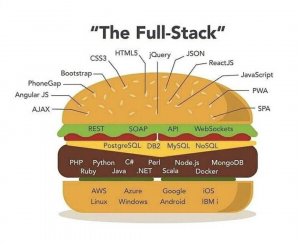
One of the most technically inclined programmers is full-stack engineers. Let’s investigate some of the key responsibilities and roles of a full-stack engineer.
A key duty of a full-stack engineer is structuring the architecture for software systems, and in addition, managing data structures and design patterns. They make apps and web offerings, as well as directing and managing dev teams.
A full-stack engineer is a senior-level software engineer – so they are also involved in the designing, testing, and execution stages of software apps. Full-stack engineers typically have vast knowledge and skills in every single phase of the software development process. The stages can feature reviewing code, evaluating performance, managing internal tools, and architectural design and updates. The tag “full-stack” refers to how versatile and complete this level of engineer is in their ability to assist in any phase of the software development process, front-end and back-end development both included.
Full-stack engineers have many responsibilities. When a project first begins, they will usually meet with the leadership team and software dev team in order to set an agenda for the skill and coverage of the software project. After this, they will manage the structuring of the software architecture – key parts of this are completing data structures and design patterns.
Once the design and planning phase is done, full-stack engineers are responsible for making the scalable web service itself, as well as apps and APIs. as well as making internal tools for the software.
Also, full-stack engineers need to be able to program basic and advanced code, do debugging and troubleshooting, handling bottlenecks, and streamlining how efficient the software is. Lastly, they have to be able to work with the design team to produce microservices, and also create technical guidance documents.
What is a Game Engineer? 🕹️
Game engineers handle a bunch of different tasks involved in the creation of video games. To begin with, game engineers can be involved in making the core software running the video game application itself. They can also be involved in the AI and ML aspects and programming of how characters move, appear, respond, and so on. Some game engineers even take charge of the design aspect itself – combining their visual creative abilities with programming in order to influence how backdrops will look or how characters will engage with these scene elements.
To pursue a career as a game engineer, the most common route is taking up a bachelor’s degree in game design or something very related, such as game programming or game software dev. These programs tend to be around for years and offer the practical and technical know-how needed to confidently enter this growing industry.
During a game design degree, the curriculum will probably involve 2D and 3D animation, as well as machine learning, artificial intelligence, software engineering, programming languages, data managing, and more. It will also teach how to work as part of a wider team. Some of these programs need their students to complete a period of internship, before course completion, which involves actually doing work in the game engineering and design industry – completion is validated by course credits. Internships like these usually last a semester or two.
What is a Mobile Engineer?
Finally, mobile engineers have become essential because of how ubiquitous mobile phones are today. One of the central reasons for this exponential adoption is the appeal and utility of smartphone apps. Some mobile engineers play a large role in developing and designing the next line of innovative apps for these devices.
Anyone can come up with an idea for a fantastic app; the real challenge is designing and building the software that makes it come to life. Mobile engineers construct and develop these applications for smartphones and other mobile devices, with some of these engineers specialised in specific systems, for example, Windows Mobile apps, Android apps, or iOS apps.
And beyond this, mobile engineers are also responsible for debugging and troubleshooting issues as well as keeping apps in line with stakeholder preferences and specifications. They also configure numerous versions for each app so that it integrates across multiple systems and devices and formulate upgrades for the apps as hardware technologies change with time.
To pursue a career in mobile engineering, you need a firm educational foundation. Most mobile engineers need a degree in computer programming, computer science, or a highly related discipline. This also normally requires a postgraduate degree. There are definitely exceptions for those pursuing a career in mobile engineering, but this is not typical so make sure to investigate if you want to get a position with one of the top tech firms that goes further than an entry-level job.
You Might Also Like:



